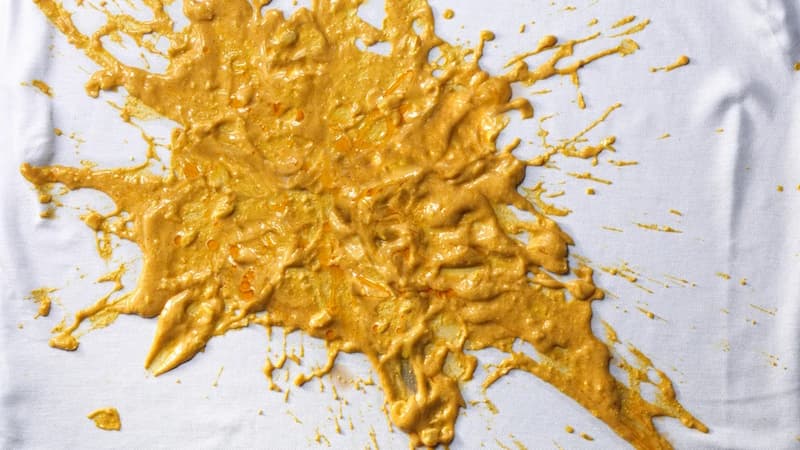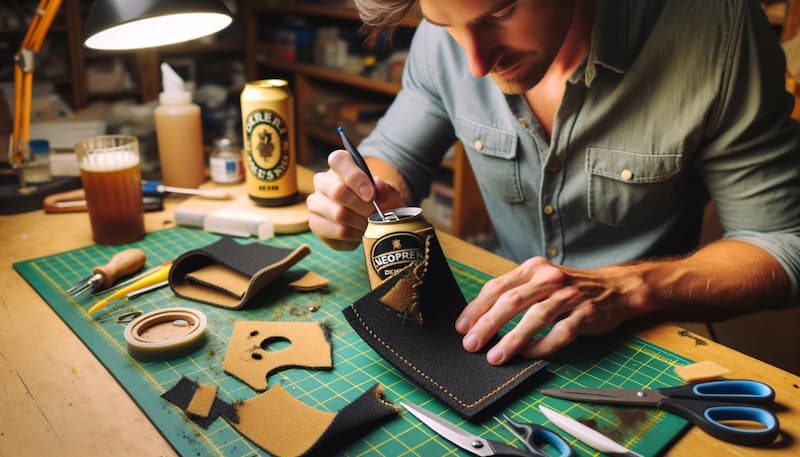
15 July, 2024
Caring for Your Stubby Holders: Tips for Longevity
They are known for their excellent insulating properties and durability and have become a popular accessory for beverage enthusiasts. Whether it's a backyard barbecue, a beach day, or just a relaxing moment at home, these holders keep your drinks cold while adding a touch of personal style. However, to ensure they last and maintain their quality, proper care is essential, and today I am going to give you effective tips for caring for your printed neoprene stubby holders.
1. Regular Cleaning
The Basics
It's best to rinse them right after use. This prevents stains from setting in, especially if it has been in contact with coloured or sugary drinks.
For stains that are harder to remove, soaking it in a mixture of lukewarm water and mild soap for a few minutes can help loosen the dirt.
If necessary, use a soft cloth or sponge for gentle scrubbing. Avoid using abrasive materials or scrubbers as they can scratch the neoprene surface.
After washing, make sure to rinse it thoroughly to remove any soap residue, as this can affect its insulating properties and leave an unpleasant taste or smell.
Avoiding Harsh Chemicals
Harsh chemicals, such as bleach, can degrade the neoprene material, affecting its elasticity and insulating capabilities. They can also cause discolouration and fading of any printed designs or logos.
For a more thorough clean without using harsh chemicals, consider natural alternatives like vinegar and water solution. Vinegar is effective at removing odours and mild stains without damaging the neoprene.
If you do use stronger cleaning agents, perhaps on tougher stains, ensure that you thoroughly rinse it multiple times to remove all traces of the chemical.
Hand Washing Technique
When hand washing, use gentle motions and avoid twisting or wringing it, as this could stretch the material.
Post washing, gently squeeze out excess water (without wringing) and then leave the holder to air dry, preferably in a well-ventilated area.
While some neoprene products may withstand machine washing, the agitation and spin cycles can be too harsh for stubby holders, leading to potential damage or misshaping. If you must use a machine, consider a gentle cycle and place the stubby holder in a protective bag.
2. Drying Techniques

Proper drying is as crucial as the cleaning process itself. It's essential to ensure they dry completely and retain their shape and functionality. Here are more insights into the recommended drying techniques:
Air Drying
This is the most recommended method for drying them. This gentle process prevents the material from any potential damage that can occur with other drying methods.
Before air drying, turn it inside out. This ensures that the interior, which often absorbs more moisture, is fully exposed to air, aiding in complete drying.
Lay it flat in a well-ventilated area to dry. This helps retain its shape and ensures even drying on all sides. Avoid hanging it, as gravity may stretch the neoprene.
If possible, flip it periodically while it's drying. This ensures that all parts, including the edges and corners, dry evenly.
Avoiding Heat Sources
Direct heat sources, such as radiators, heaters, or direct sunlight, can be detrimental to neoprene. These sources can cause the material to warp, melt or become brittle, reducing its insulating properties and lifespan.
While sunlight is a natural drying agent, prolonged exposure can degrade the neoprene and fade its colours. If using sunlight for quick drying, limit exposure and avoid peak sun hours.
Tumble dryers, even in a low-heat setting, can be too intense for neoprene. The tumbling action, combined with heat, can cause shrinkage and distortion.
The ideal drying environment is a room temperature setting with good airflow. This can be near an open window or a fan to circulate air without introducing excessive heat.
Adhering to these drying techniques will help maintain the quality and longevity of your neoprene stubby holders. Air drying, particularly, is a safe and effective method that ensures they are ready for use without any compromise to their shape or material properties. Remember, patience is key – allow them to dry naturally and completely before storing or reusing them.
3. Storage Tips

Proper storage is essential to maintain their shape, functionality, and longevity.
Flat Storage
Storing them flat or in their original cylindrical shape is crucial to prevent any permanent creases or deformations in the material. It can develop memory for folds and creases over time, which might affect its insulating properties and aesthetic appeal.
If you need to store multiple ones together, stack them on top of each other rather than folding or rolling them up. This method maintains the holder’s integrity and prevents any pressure marks or distortions.
For those who collect or have multiple ones, consider using a dedicated storage box or a custom rack where they can be placed upright and separate from each other, maintaining their shape.
Cool, Dry Place
Storing them in a cool, dry place is critical. Damp environments can encourage the growth of mildew or mould, which can be difficult to remove and can cause unpleasant odours or even deterioration of the neoprene material.
A cupboard, drawer, or storage area in your home that is away from moisture sources is ideal. Ensure the storage area is well-ventilated to avoid trapping any residual moisture that might lead to mildew growth.
While a dry place is crucial, avoid areas with direct sunlight. Prolonged exposure to UV rays can degrade the neoprene and cause the colours to fade.
In naturally humid environments, consider using dehumidifiers or silica gel packets in the storage area to help absorb excess moisture.
Long-Term Storage
If you're storing themem for an extended period, ensure they are completely dry before storing them to prevent any moisture-related issues.
You might also consider storing them in breathable fabric bags to protect them from dust and other environmental factors while still allowing air circulation.
4. Dealing with Odours

Maintaining the freshness of them is important, especially since they are often used for drinks and can absorb odours over time.
Natural Deodorisers
Baking soda is a natural deodoriser and is gentle on neoprene. To create a cleaning solution, mix a small amount of baking soda with water to form a paste. Gently rub this paste on the inside and outside of it. Baking soda helps neutralise odours without damaging the material.
For persistent odours, you can soak it in a baking soda and water solution for a few hours. This method allows the deodorising properties of baking soda to penetrate more deeply.
After using the baking soda solution, it's crucial to rinse the stubby holder thoroughly with water to remove any residue. Any remaining baking soda could affect the taste of beverages later.
Other natural deodorisers include white vinegar or mild dish soap mixed with water. These can be used similarly to baking soda but ensure thorough rinsing afterwards.
Ventilation
Always air dry them after use or washing. Storing them while they are still damp can lead to odour build-up. Even when not in use, it’s beneficial to regularly take them out of storage and air them out. This prevents any stale or musty smells from developing.
Ensure the storage area is well-ventilated. A closed, damp environment can lead to mildew, which not only produces odours but can also damage the neoprene.
Storing them in plastic bags can trap odours and moisture. If you need to use a bag for storage, opt for breathable materials like cotton.
5. Avoiding Stains and Fading

They can be vulnerable to stains and colour fading. Preserving their appearance requires a combination of preventive measures and careful handling.
Preventative Care for Stains
Be conscious of where you place them. Setting them down on dirty or wet surfaces can result in stains that are tough to remove. It's also wise to avoid areas where spills are likely, such as near the edges of tables.
In the event of a spill, especially with coloured beverages like wine or fruit juice, clean it immediately. The longer a spill sits, the harder it is to remove the stain. Also, when using them indoors or on surfaces prone to condensation, placing a coaster underneath can prevent water rings and protect the holder from potential stains.
If you’re planning to use it at events where stains are more likely (like outdoor BBQs or beach outings), consider pre-treating them with a fabric protector spray that's safe for neoprene. This can create a barrier against potential stains.
Preventing Colour Fading
Neoprene can fade when exposed to sunlight for extended periods. While using it outdoors is fine, avoid leaving it in direct sunlight for prolonged durations, such as on a windowsill or in an open area.
For those who frequently use theirs outdoors, consider using holders treated with UV-resistant materials. These specially designed neoprenes can better withstand sunlight without fading.
When not in use, store them in a place away from direct sunlight. A drawer, cupboard, or storage box can provide a dark, fade-preventing environment.
If you have multiple ones, rotating their use can help reduce prolonged exposure to sunlight for any single holder, thereby reducing the risk of fading.
6. Repairing Minor Damages

Despite their durability, they can occasionally suffer from minor damages like tears or separations. Fortunately, with the right approach, these issues can often be repaired at home.
Identifying Suitable Adhesives
For neoprene repairs, it's crucial to use an adhesive specifically designed for neoprene or wetsuit material. These adhesives are formulated to bond well with neoprene and remain flexible after drying, which is essential for maintaining the holder's elasticity.
Standard superglues or household adhesives are not recommended as they may not bond effectively with neoprene and can become brittle, leading to further damage.
Preparing for the Repair
Before applying any adhesive, ensure the area around the tear or separation is clean and dry. Any dirt, moisture, or residue can prevent the glue from adhering properly. If there are any frayed edges around the tear, gently trim them with scissors. This creates a cleaner area for the adhesive to bond.
Applying the Adhesive
Read and follow the instructions on the adhesive packaging carefully. Some adhesives require applying to both surfaces, while others might work with a single application.
Use a small brush or a toothpick for a more precise application of the glue, especially for small tears. Ensure that the adhesive covers the entire area of the tear for a strong bond.
After applying the adhesive, press the torn areas together and allow sufficient time for the glue to cure. The drying time will vary based on the adhesive, but it's typically a few hours to overnight.
Testing the Repair
Once the adhesive is fully dry, gently test the repair by slightly stretching the area. This ensures that the bond is secure and the neoprene retains its flexibility.
Avoid putting the repaired stubby holder under heavy stress immediately. Give it some time to ensure the repair holds up.
Additional Reinforcement
For larger tears, consider using a neoprene patch along with the adhesive. Apply the glue to both the patch and the torn area, then press the patch over the tear for additional reinforcement.
DIY repairs can be a straightforward and effective way to extend their lifespan. By using the right adhesive and following a careful process, minor damages can be fixed, saving your favourite holders from being discarded. Remember, patience and attention to detail are key in achieving a successful repair.
The Wrap
Your stubby holders can last for years with the right care. Regular cleaning, proper drying, and mindful storage are key to maintaining their insulating properties and appearance. By following these simple tips, you can ensure that your favourite beverage companion stays in great shape, ready for your next drink. Remember, a well-cared-for stubby holder not only looks good but also effectively keeps your drinks at the perfect temperature, enhancing your drinking experience.
The Stubby Holders Team


